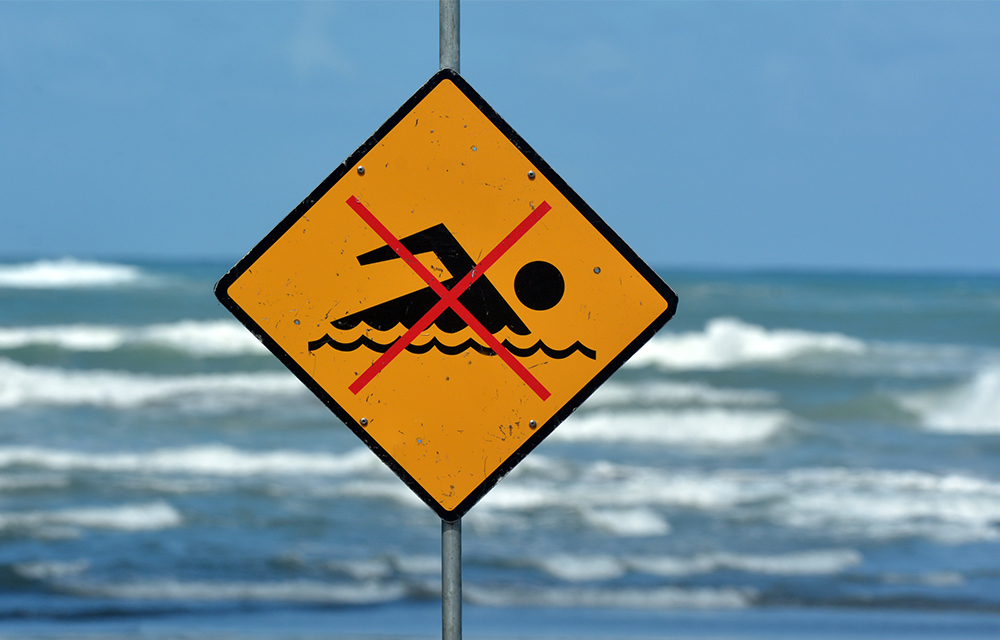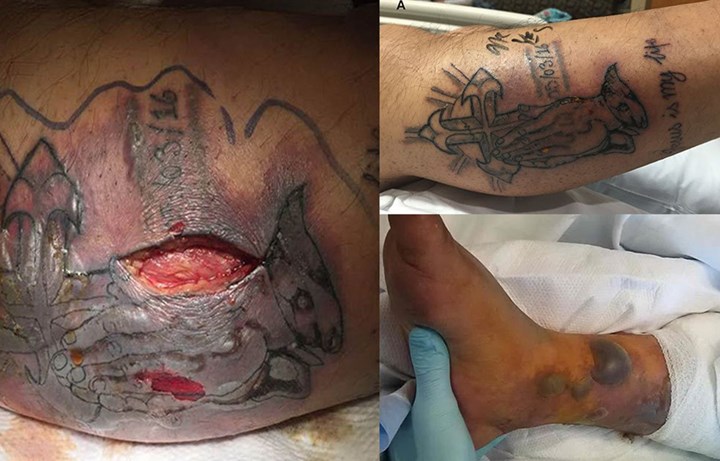
Five days after getting a new tattoo on high right calf, a 31-year-old man went for a swim in the Gulf of Mexico.
Two days later, he developed a fever and chills, and swelling began to spread over the tattoo site, as well as throughout both his legs.
He went to the emergency room one day later. His lesions began to change, developing central purple patches with black borders. Fluid-filled blisters called bullae began erupting over his lesions at an alarming rate, as doctors described in BMJ Case Reports.
Lab work also turned up high levels of liver enzymes, which suggested a history of chronic liver disease.
With the progression of the lesions—coupled with a history of liver disease in a patient with recent seawater exposure after getting a tattoo—the doctors suspected infection with Vibrio vulnificus, a type of bacteria present in ocean water.
RELATED: How Coffee Protects Your Liver
Labs confirmed it, and doctors started the man on a double antibiotic regimen. But his condition deteriorated, and he went into septic shock. He died due to a combination of liver disease, kidney failure, and necrotic skin lesions.
Infection with Vibrio vulnificus can cause watery diarrhoea, abdominal pain, nausea, fever, and chills, usually beginning about 24 hours after ingestion, according to the Centres for Disease Control and Prevention (CDC).
Most cases occur when you eat raw oysters contaminated with the bug, but they can also occur when contaminated water enters an open wound.
RELATED: Tell The Big C To Go F Itself
That was likely the case with the man in the case report—the doctors write that the recent tattoo was the suspected entry point for the bug.
In fact, if you read your tattoo aftercare instructions, you’ll probably see that swimming is discouraged until your tattoo fully heals.
Tattoos are created through micro-abrasions on the skin, which makes it easier for bacteria to get in, says Jared Jagdeo, M.D, an assistant professor in the department of dermatology at the University of California who has researched tattoo aftercare instructions. And outdoor activities like swimming can provide ample opportunity for bacteria to enter—upping your risk of infection.
While it’s not uncommon to develop an infection after getting a tattoo, Vibrio vulnificus is rare in healthy people. In fact, healthy people make up less than 5 percent of all cases of Vibrio vulnificus sepsis, the study says.
The man’s chronic liver disease was a huge risk factor for it, which left him susceptible to developing a severe infection. So if you have chronic liver disease, it’s best to avoid raw oyster ingestion and swimming in seawater with open wounds, the researchers write.
As for healthy guys who just got inked? Follow your aftercare instructions.
This article originally appeared on Menshealth.com.

















